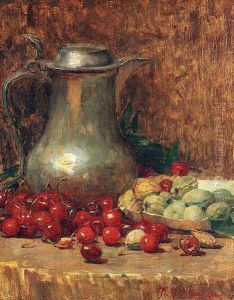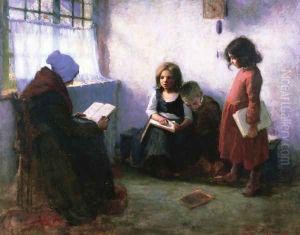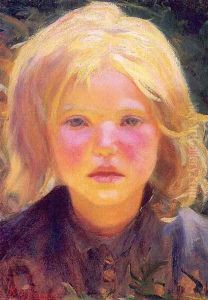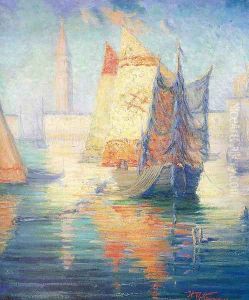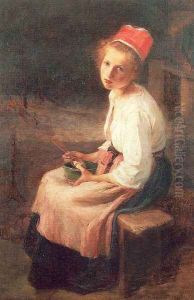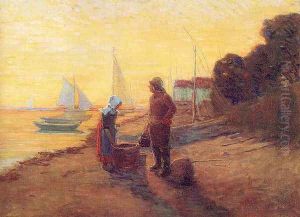Willie Betty Newman Paintings
Willie Betty Newman was an American artist born on December 23, 1863, in Murfreesboro, Tennessee. Although Newman may not be as widely recognized as some of her contemporaries, she made significant contributions to the art world during her time, particularly in the realm of painting and teaching.
Newman's artistic journey began at a young age, showing a talent for drawing and painting. She received her formal art education at the Cincinnati Art Academy in Ohio, where she studied under notable artists such as Thomas Noble and Lewis Henry Meakin. After honing her skills, Newman continued her studies in Paris at the Académie Julian, a popular institution among American and international artists during the late 19th and early 20th centuries. There, she was mentored by renowned artists like William-Adolphe Bouguereau and Tony Robert-Fleury.
During her time in Paris, Newman was influenced by various artistic movements, and her work began to reflect the Impressionist style, characterized by loose brushwork and a vibrant palette. She exhibited her works at the Paris Salon, an esteemed venue for artists of the time, which was an impressive accomplishment, particularly for a woman artist in the male-dominated art world of the period.
After returning to the United States, Newman resided in Nashville, Tennessee, where she became a prominent figure in the local art scene. She taught at Ward's Seminary for Young Ladies, which later became part of the Harpeth Hall School, influencing a new generation of artists. Newman also became actively involved in the Nashville Art Association and served as the president of the Centennial Club, contributing to the cultural development of the region.
Newman's art often depicted the landscapes of the American South, particularly the Tennessee countryside, as well as scenes from her travels abroad. Her works are characterized by their atmospheric quality and often contain a lyrical sense of light and color. Despite her achievements, Newman's work was somewhat overshadowed after her death on June 10, 1935, and she has not been as extensively studied or exhibited as some of her contemporaries.
However, in recent years, there has been a resurgence of interest in the works of women artists like Willie Betty Newman. Her paintings are now more recognized for their contributions to American Impressionism and their depiction of Southern landscapes. Her legacy continues to inspire and inform the understanding of early American women artists and the cultural history of the South.
